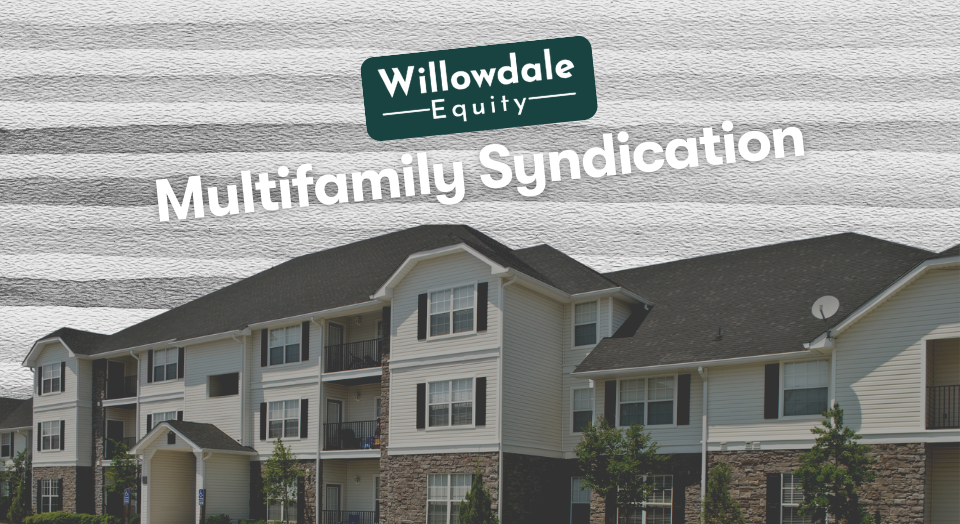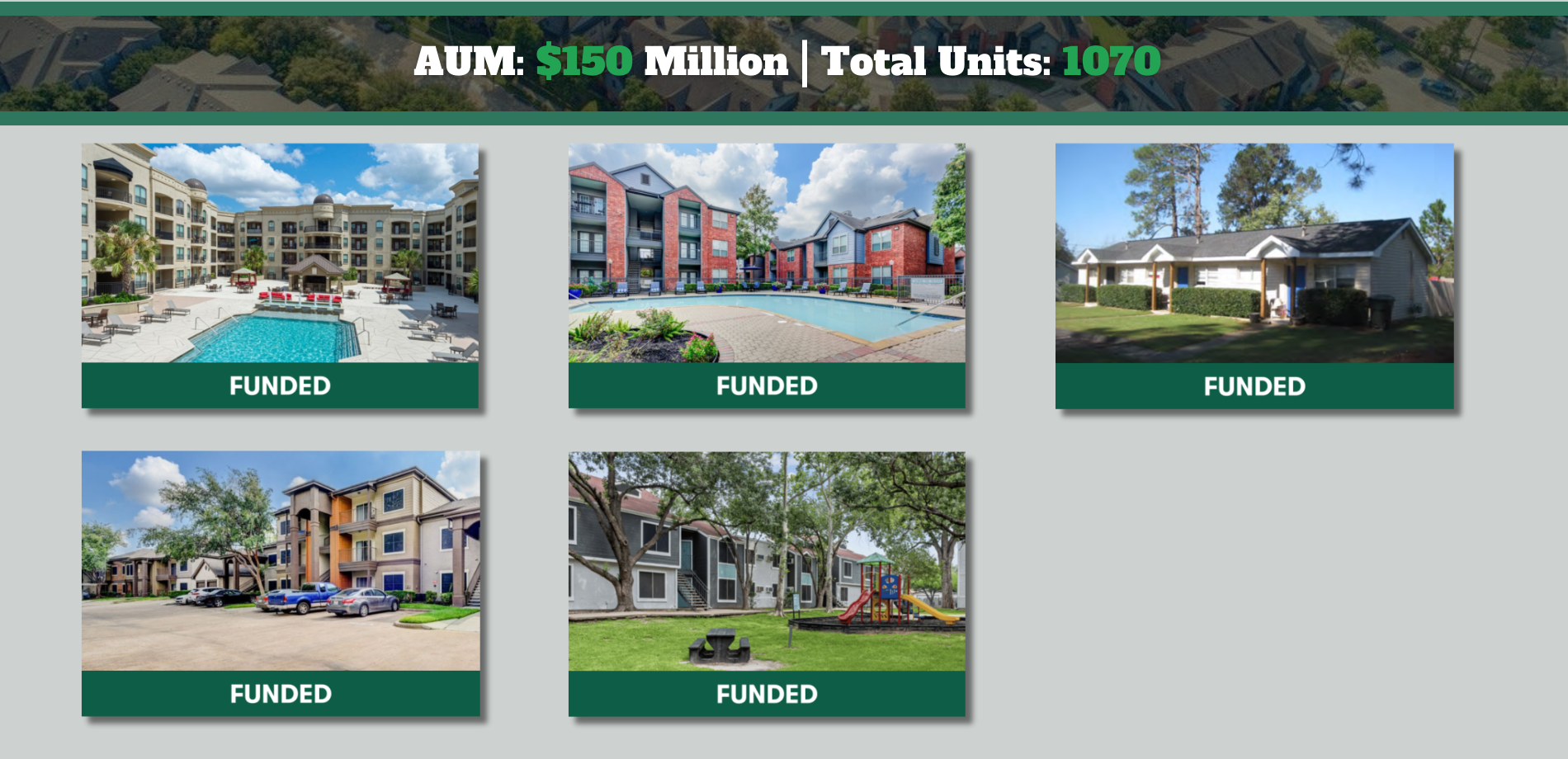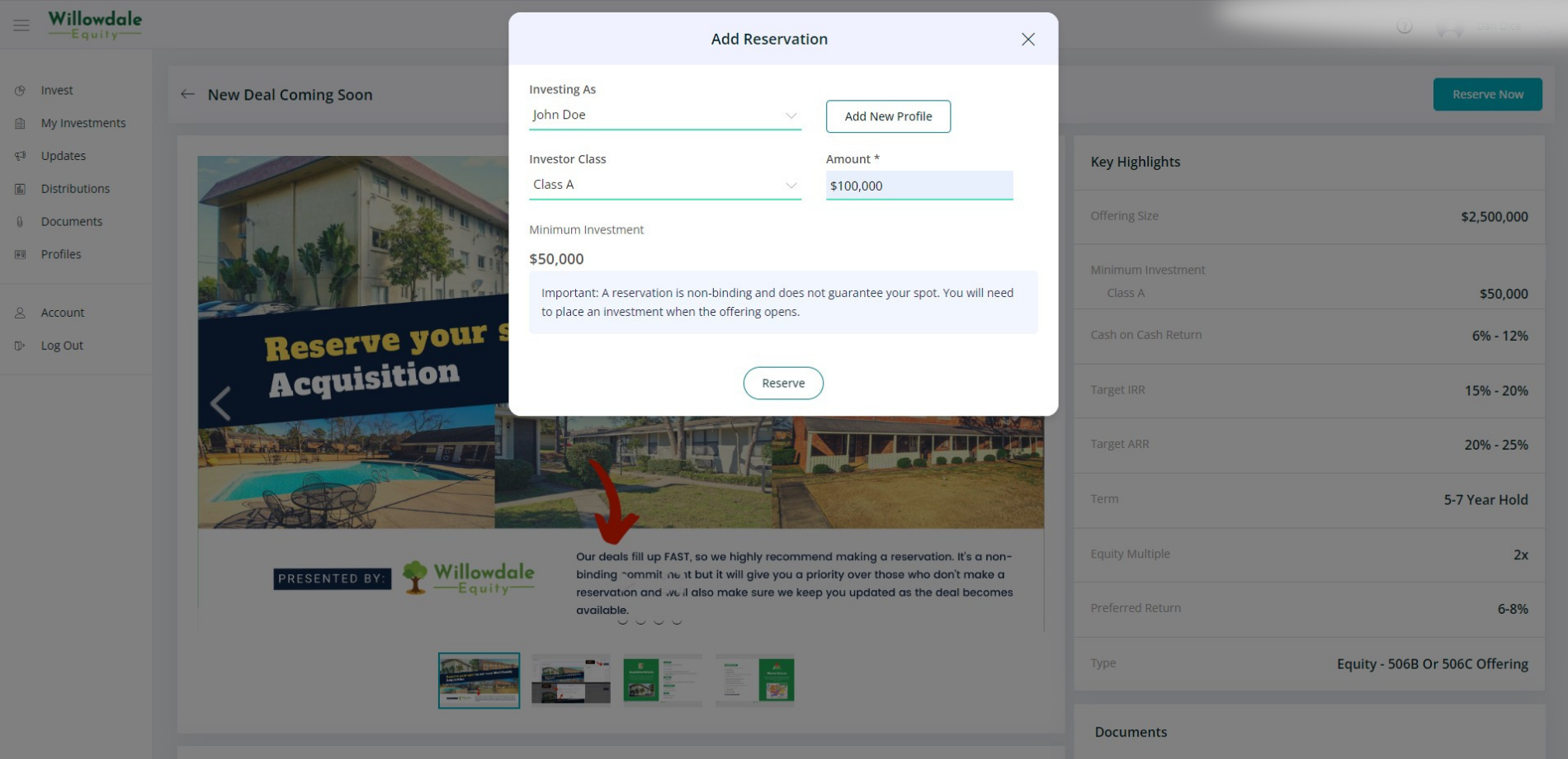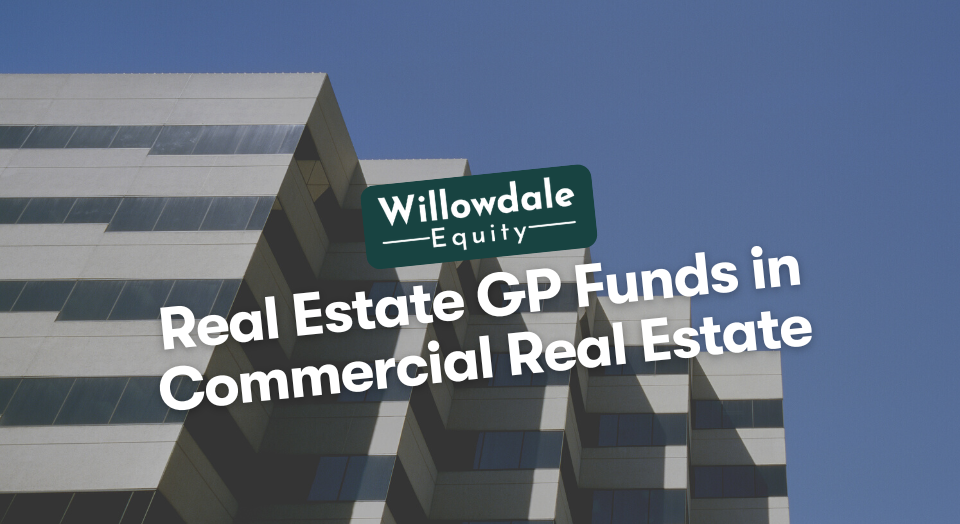
Multifamily Syndication in 2024
This article is part of our passive investors guide on real estate syndications, available here.
Multifamily has proven to be one of the most insulated and resilient asset classes over the past decades. This has certainly been showcased throughout the COVID-19 pandemic and post-pandemic. There is such a high demand for housing, apartment units, and multifamily as an asset class.
It isn’t easy to find and compete on these larger assets, and that’s where multifamily syndication comes into play. Offering a great real estate investment vehicle and the opportunity for outside investors to share in all the benefits of this asset class while being in a completely passive role.
In this article, we’ll break down multifamily syndications, how they work, their benefits, and what it looks like in 2024.
Key Takeaways
-
Capital pooled from various investment amounts from several individual investors or groups.
-
The sponsor/syndicator locates and negotiates the property to acquire, secures the financing, due diligences the property physically and financially, and they proceed to operate the property on a day to day, executing the business plan all the way to when the property is sold on behalf of the investors.
-
Investing in multifamily real estate syndications is a great way to invest without all the headaches of being an active operator of highly operational property like rental real estate.
-
By leveraging other investors’ capital who also invest alongside you in the syndication, you access larger multifamily properties with more units, lowering the risk as it is spread out over more units.
What is Multifamily Syndication?
Multifamily syndication is a real estate syndication with a multifamily property being the asset type being acquired. Syndication in real estate is the pooling of funds and resources to purchase an asset. In the case of multifamily syndication, that means that the passive investor’s sole responsibility is to bring in the capital required to purchase a particular multifamily property.
This capital is then pooled at various investment amounts from several individual investors or groups. The sponsor/syndicator locates and negotiates the property to acquire, secures the financing, due diligences the property physically and financially, and they proceed to operate the property on a day to day, executing the business plan all the way to when the property is sold on behalf of the investors.
This removes all the highly active operational commitment it takes to operate rental real estate, which comes with many headaches, including dealing with tenants daily. Not to mention managing much larger rental real estate with more units and headaches to achieve the economy of scale that’s necessary to fairly compensate competent property management to ensure the project’s success.
Now let’s look under the hood of how a multifamily syndication works.
How Does a Multifamily Real Estate Syndication Work?
These investment vehicles are fairly simple to understand when broken down into stages. The following are the three core stages of how a multifamily syndication works:
1.) Origination Stage

The origination stage is the developmental part that lasts several months. This is where the real estate sponsor/syndicator works to identify and negotiate a deal directly with the seller or the listing broker. Underwriting projections are formed after an in-depth financial analysis of the properties trailing financials to create a business plan and to forward look at things like rent growth, cash flows, value-add opportunities, and the potential return for investors.
Simultaneously, insurance and financing are being secured by working with the lenders to provide financials, rent rolls, appraisals, inspections, and more. After those mentioned above and final physical walkthroughs are performed, the syndicators will be forming the opportunity legally with lawyers, creating the property entities, packaging up the investment opportunity, and raising capital from investors to close the deal.
2.) Operation Stage

The operation stage is where the syndicator takes action on the business plan they created for the underlying property. This is where the syndicator rolls up their sleeves and works with property management and potentially several contractors to make physical and operational improvements. Upon takeover, property management will meet and introduce themselves to the existing tenant base. Typically, many deferred issues are fixed, followed by making physical improvements to the exterior and interior of the apartment community.
Property management will work closely with the asset manager to ensure that new leases are coming in at their projected market rents per the original business plan. Continuing to market the newly renovated property, have new prospective tenants tour the new units, and make payments to all the vendors, including the lender, tax assessor, and insurance provider.
The syndicator will continue to provide reporting and updates to investors on the progress at the property, prepare taxes on behalf of the partnership and prepare a schedule K-1 form for each investor so they can file their own tax returns.
3.) Liquidation Stage

The liquidation stage is when the syndicator works to create the first liquidity event for the project. Typically liquidity events either happen in the form of a refinance or sale, which means that investors are taking part in being returned a large amount of capital. Most multifamily syndication has both of these liquidity events throughout the hold period of the deal.
In the content of a refinance, the syndicator works hard to assess whether this is the best time and if there has been enough value created where it makes sense to take on the time and costs of a refinance. This involves intense financial due diligence and shopping with lenders to secure the best financing terms to get the investors back a good percentage of the initial capital contributions.
On the sale, a lot of work is put into ensuring the property is in the best condition by attending to items that need attention. Preparing all the paperwork and items that a prospective buyer will need, diligencing and selecting a strong real estate broker, reviewing and negotiating offers, wiring investors their share of the profits, preparing the final tax returns, and schedule K-1 for investors upon closing.
Next, let’s look at who performs the roles above in each stage of the syndication process and what the operator and investors are classified as in a syndication.
Related Read: Real Estate Syndication Structures Explained
Investing in Multifamily Real Estate Syndications
Investing in multifamily real estate syndications is a great way to invest without all the headaches of being an active operator of highly operational property like rental real estate. But before you consider multifamily investing, it’s important to note the roles in this partnership.
General Partners (GP)
The general partners are the syndicator or operator that created the opportunity and opened it up to you, the passive investor.
They are the jockey of the project and carry all the responsibilities and day-to-day duties of managing the asset and its operations on behalf of the limited partners, which we discussed in detail in the previous section regarding the syndication stages. That means there in a highly active role, and they do all the heavy lifting for the partnership.
Limited Partners (LP)
You, the passive investor, would be a part of the “limited partners”, which for short is referred to as an LP. Being an LP means you have no responsibilities in the deal whatsoever aside from your capital contribution that is made to the deal.
That means that the syndicator/general partner is the jockey, responsible for all aspects of the partnership, including when things go wrong.
Multifamily Syndication Outlook in 2024
As the economy has begun to tighten since the historical climb in the federal funds rate, we continue to see downward pressure on some multifamily sellers. This massive increase in debt service from their floating rate loans and the coming maturity dates on some select bridge loans are where some of these buying opportunities might be presented.
Here at Willowdale Equity, we believe this will create a more advantageous opportunity to acquire strong deals at a good cost basis as the bid and ask between sellers and buyers continues to adjust.
Let’s now talk about some of the benefits are for investing in multifamily syndications.
Multifamily Syndication Investing Benefits
Multifamily syndication investing offers passive investors many benefits, from the asset class’s strong fundamentals to operations. Below are several ways in which passive investors benefit:
- Strong Occupancy/Economies of Scale
- No Responsibility & Fixed Risk
- Cash Flow
- Leverage
- Access to Private Opportunities
- Forced & Market Appreciation
- Capital Preservation
- Inflation Hedge
- Tax Advantages
Strong Occupancy/Economies of Scale

By leveraging other investors’ capital who also invest alongside you in the syndication, you access larger multifamily properties with more units, lowering the risk as it is spread out over more units.
For example, if you were only able to invest on your own in a duplex and had one vacancy, that would mean that you’re at a 50% occupancy, and you’ll likely be covering some of your operating costs out of pocket. But in a larger unit multifamily community, the average suburban occupancy rate is around 95%.
When you have several vacancies, the property can easily absorb that and still be in a solid cash-flowing position. Additionally, the smaller you go, the higher some fixed costs are, so having those economies of scale lowers your blended operating costs across the whole complex.
No Responsibility & Fixed Risk
As a passive investor or limited partner, you have no partnership responsibilities other than bringing capital to the deal. Additionally, the limit of risk you have as a limited partner is up until the amount of capital you contributed to a deal.
Cash Flow
Consistent cash flow is one of the greatest benefits of multifamily syndication, as cash flow is hard to come by in other asset classes or investment instruments. Speculatory investment and betting solely on appreciation becomes even higher risk when there’s economic uncertainty. If you have cash flow, and you can bet on the cash flow every month due, it changes how you move.
Whether asset values are up or down today or tomorrow, it doesn’t matter because when you zoom out over a larger timeline, the values of multifamily and real estate asset values have historically appreciated. This means that when you have cash flow, your investment strategy doesn’t change because the cash flow allows you to weather the storm and ride it out until there are sunny days again.
Leverage

Consistent cash flow is one of the greatest benefits of multifamily syndication, as cash flow is hard to come by in other asset classes or investment instruments. Speculatory investment and betting solely on appreciation becomes even higher risk when there’s economic uncertainty.
If you have cash flow, and you can bet on the cash flow every month due, it changes how you move. Whether asset values are up or down today or tomorrow, it doesn’t matter because when you zoom out over a larger timeline, the values of multifamily and real estate asset values have historically appreciated.
This means that when you have cash flow, your investment strategy doesn’t change because the cash flow allows you to weather the storm and ride it out until there are sunny days again.
Access to Private Opportunities
Syndications are private investment opportunities that are not open to the public. This means that there is an exclusivity factor to these opportunities, as to get access, you must establish a prior relationship with a deal sponsor.
Forced & Market Appreciation
Being in the right markets with solid fundamentals and in the right property with the opportunity to add value is where most of the equity is created for investors in a syndication.
Instead of just waiting for years for the property to appreciate, you can invest in a value-add deal, where you can force appreciation through physical and operational improvements that increase income, increasing the property’s value.
Capital Preservation
Rule number 1 should always be not to lose principle. Multifamily syndications are a great vehicle to preserve principle by it being a safe hard asset class that outpaces inflation, further preserving the purchasing power of your principal.
Inflation Hedge
This is a significant component of real estate investing that investors often overlook. Rents have historically outpaced inflation even since that pandemic, where we’ve seen almost double-digit inflation, but rent in some select markets grew by over 20-30%.
Tax Advantages
The tax advantages of multifamily real estate are second to none, as passive investors can share in all the “paper losses” from straight-line and bonus depreciation.
This enables investors to tax shelter their cash flow distributions every quarter from the deal by having more “paper losses” than the cash flow distribution they were distributed.
Frequently Asked Questions About Syndication Multifamily
Multifamily syndicators make money in several ways. They earn fees such as the acquisition fee and asset management fee; they could also earn a share of the cash flow if the deal generates cash flow over the investor’s preferred return and in the upside of the property when its sold.
The three phases of syndication are origination, operation, and liquidation. The three phases cover all the steps from locating the asset and closing on it to operating the day-to-day operations and selling the asset.
Multifamily Syndication - Conclusion
Multifamily syndication will continue to be a resilient asset class and investment vehicle to build and preserve wealth over time. In 2024, having a short, narrowed, zoomed-in time horizon for deals is a strategy for the past and more unrealistic for this stage in the market.
Great multifamily deals will potentially present themselves over the next 12-18 months, and being ready to take advantage of these opportunities as a real estate investor should be your prime focus. Investing in solid deals with strong upside, solid fundamentals, and a good debt product creates a wealth-building vehicle that can stand the test of potential turbulent or uncertain times because you have cash flow and time.
If you’re looking to access private multifamily syndication investment opportunities across the southeastern United States, apply to join the investors club here at Willowdale Equity today.
The Willowdale Equity Investment Club is a private group of investors that are looking to passively grow their capital and share in all the tax benefits through multifamily real estate investments.







